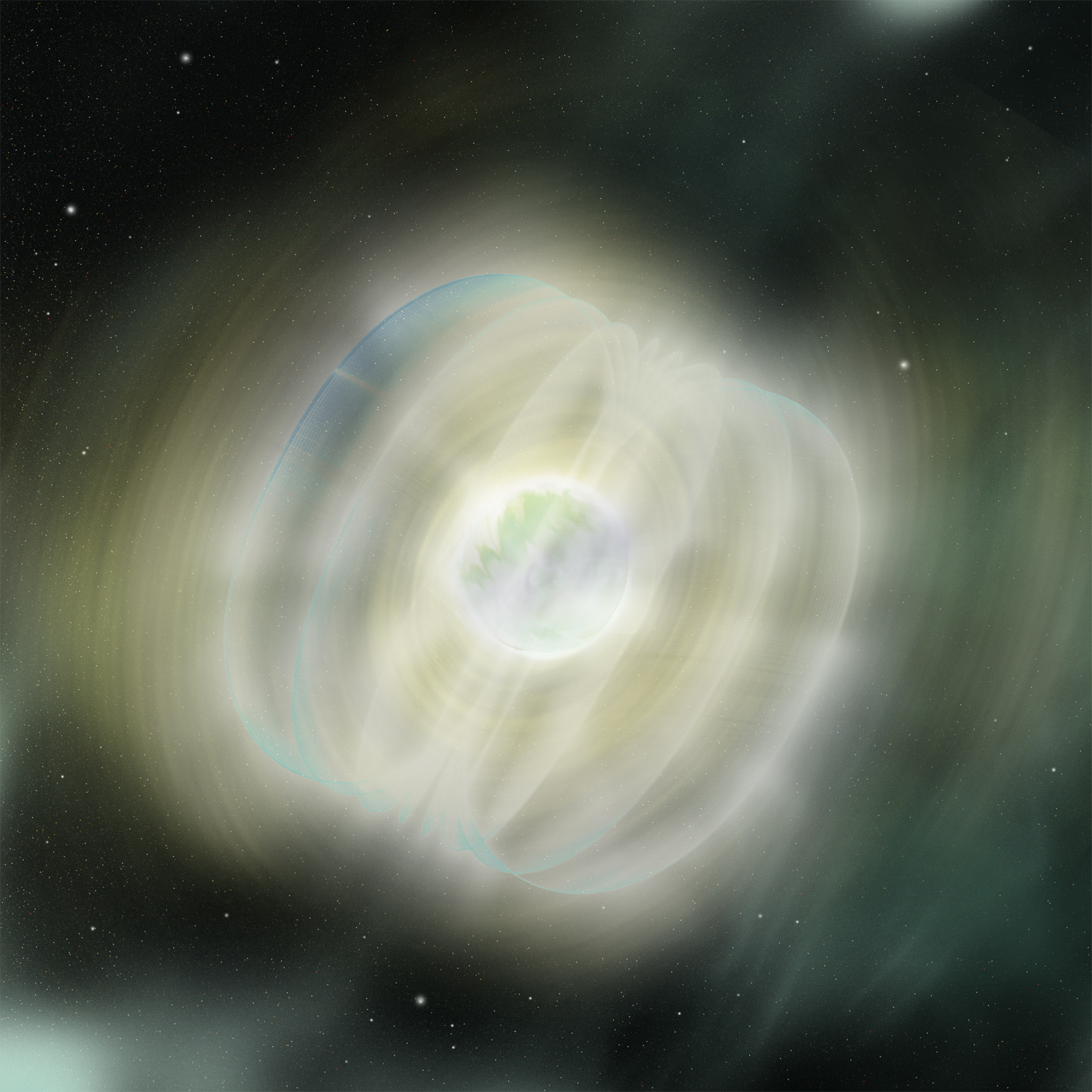In this series we are exploring the weird and wonderful world of astronomy jargon! Hang on to your magnetic hats, because today’s topic is magnetars!
Let’s start with neutron stars. These are the remnant cores of giant stars, made almost entirely of pure neutrons. But there are also some electrons and protons swimming around, and they’ll be important in a second. Neutron stars are already incredibly weird: they have several times the mass of the sun crammed into a volume about the size of Manhattan. That’s a lot of density. You would be perfectly entitled to call neutron stars the largest atomic nuclei in the universe.
Now back to those electrons and protons. Neutrons themselves are electrically neutral, and don’t really do much in this story except provide the bulk of the neutron star mass. But electrons and protons are electrically charged, which is important once I tell you that some neutron stars spin insanely fast. We’re talking up to tens of thousands of rpm – that’s faster than your kitchen blender (please don’t make smoothies with a rotating neutron star).
Those electric charges whipping around at that velocity can power up some truly enormous magnetic fields. And now we come to the magnetars: the name we give to super-rotating, super-magnetized neutron stars. Magnetars have, by far, the most powerful magnetic fields in the universe. A typical magnetar’s field is over a trillion (yes, with a “t”) times more powerful than the Earth’s. And sometimes these even reach up into the quadrillion.
That’s a lot of illions.
That magnetic field is strong enough to dissolve you – literally tear apart your molecular bonds – from about a thousand miles away.
Good thing they’re rare. Magnets only make up a small percentage of all neutron stars. It’s thought that only newly-born neutron stars can maintain the spins necessary to power them up. To date, astronomers have only catalogued a mere 24 of these beasts.

